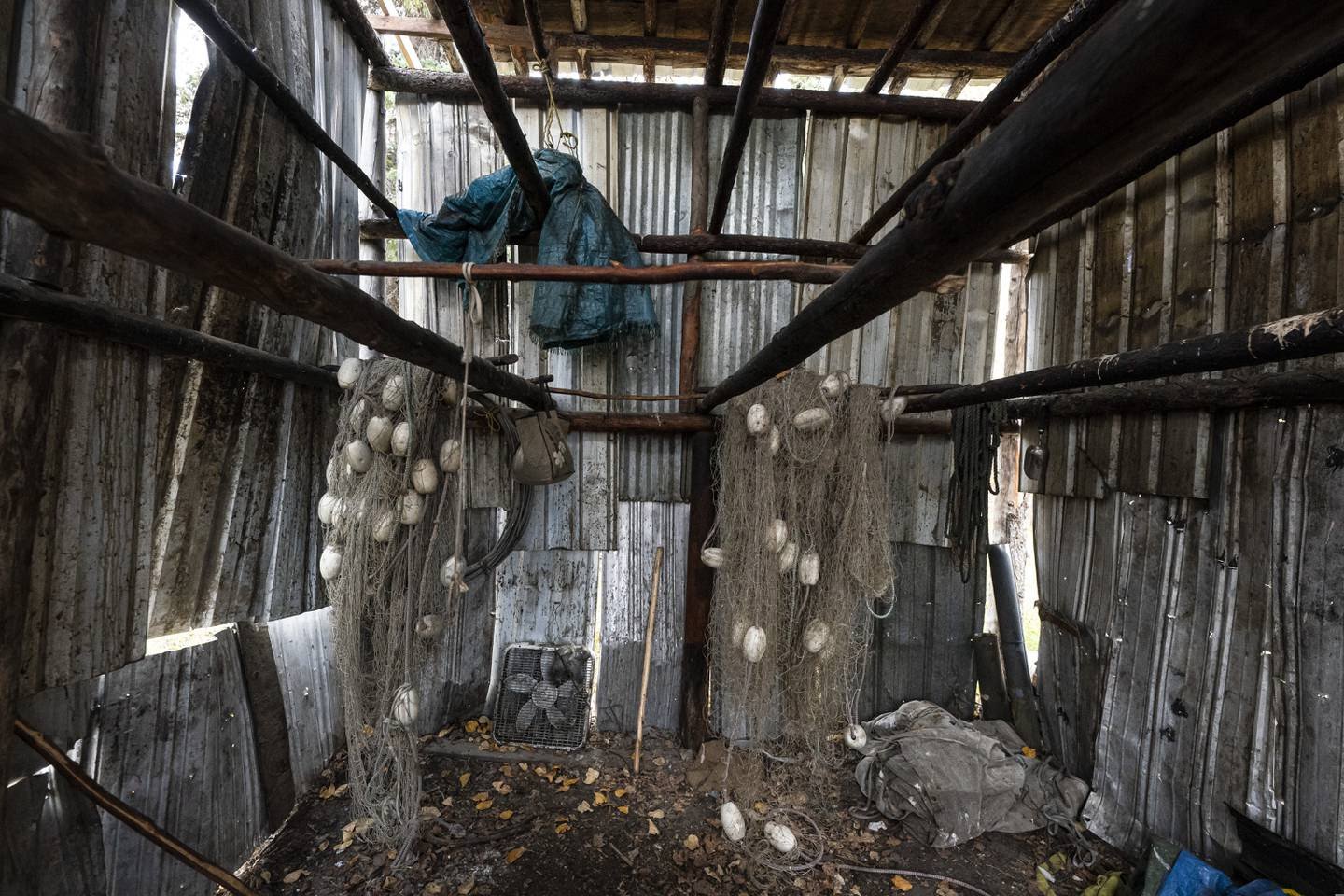OPINION: For Alaska, federal fisheries updates can’t come soon enough
In Anchorage Daily News
By Brooke Woods, Linda Behnken and Nanci Morris Lyon
October 20, 2023
Two salmon species have all but disappeared from Alaska's Yukon River this year, prompting the state to shut down fishing in an effort to save them. (AP Photo/Nathan Howard)
It was another heartbreaking summer on the Yukon River. Smokehouses and fish camps stood empty, leaving Alaska Native peoples unable to practice ways of life that have been in place for millennia. Community-based commercial fishing operations were shut down and sport and charter fisheries were shuttered or drastically reduced. This long, grim, list of reductions and closures has affected nearly everyone who fishes in Alaska — except the biggest and most wasteful ones.
The Gulf of Alaska and Bering Sea trawl fleets have bycaught and largely discarded dead more than 28,570 chinook salmon, 119,859 chum salmon, 3,897,205 pounds of halibut, 7,298,550 pounds of herring and 694,826 crabs so far this year.
Federal fisheries off Alaska are managed via the dictates of the North Pacific Fishery Management Council, which has done little to address the trawl fleet’s enormous bycatch of species immeasurably important to Alaskans. This is despite years of requests for positive change from Indigenous peoples, stakeholders, and the public. In particular, bycatch of king and chum is unconscionable, especially since recent years have seen limited or no subsistence salmon fishing in the Yukon and limited harvest on the Kuskokwim. This stark inequity must be addressed.
There is no denying that climate change is driving rapid, dramatic shifts in the Bering Sea and Gulf of Alaska ecosystems. The council’s lack of action means Alaska’s historic fisheries and fishing communities are paying the environmental price of those changes, while the most concrete action on the table — the meaningful reduction of trawl bycatch — is consistently rejected as not “practicable.” Clearly the council system is not serving Alaskans and it’s time to take key issues to a higher authority.
That’s why, this summer, we were gratified to see NOAA Fisheries ask for input on changes that could help fix some of what is broken about this system. Specifically, updating important guidance language for three of 10 national standards that, under the Magnuson Stevens Act, govern federal fisheries and guide decisions made by the council.
Under the status quo, the council is allowed to prioritize short-term economic gains over ecosystem and community needs. It perpetuates inequity and environmental injustice, pushing the burden of conservation from industrial trawlers onto everyday Alaskans. Updated language for these guidelines could turn this around. Thousands of Alaskans and Americans recently weighed in advocating for these changes.
For years now, the North Pacific Fishery Management Council has siphoned off the time and energy of many hundreds of Alaskans for little positive benefit. We sign up to testify at council meetings. We wait for hours — sometimes days — for our turn to speak. When we are finally allotted our three to five minutes, we tell the council our stories: of families who are leaving small remote communities, driven out by the lack of job opportunity, access to fisheries, available affordable food, and ability to practice traditional ways of life. We speak of shuttered traditional, commercial, charter and sport fisheries in the Bering Sea and Western Alaska. We explain how in some locations one ship’s “acceptable” chinook bycatch can wipe out an entire age class of salmon. And we tell the sad stories of elders and loved ones who have passed without one last taste of king salmon, and of families unable to share their first catch.
Instead of acting on these concerns, the council, which contains zero tribal representatives and a voting majority of people with ties to the trawl industry, has largely upheld the status quo.
In recent years, the council has refused to stop “midwater” trawls that are estimated to drag the bottom between 70 and 90% of the time in the Bering Sea during crab molting, including in areas that are closed to crabbers in order to conserve and rebuild the crab population. The council has yet to institute a cap on chum salmon bycatch, meaning trawlers can bycatch and discard an unlimited number of chum — including years chum returns to the Arctic-Yukon-Kuskokwim are devastating, leaving families with no salmon for the long winter.
Overall, the council continues to shift the conservation responsibility from trawlers — which on average each year bycatch and largely discard dead 141 million pounds of marine life — to Alaska families, rural residents, businesses and directed fishermen.
Ultimately, federal fisheries that focus on equity, community, climate adaptivity and sustainability will lead to a more positive outcome for wild salmon, halibut, crab, herring and those of us who care deeply about them. As it now stands, the North Pacific Fishery Management Council’s management practices are doing little to address the collapse of some of the most productive ecosystems on the planet. That isn’t good for anyone, Seattle-based industrial trawlers included. For those of us who live here, it’s devastating.
Change can’t come soon enough.
Brooke Woods is a lifelong traditional fisherman and a resident of Rampart, on the Yukon River. She is the former chair of the Yukon River Intertribal Fish Commission, is a Woodwell Climate Research Center climate adaptation specialist, and is pursuing a degree in fisheries science from the University of Alaska.
Nanci Morris Lyon is the owner of Bear Trail Lodge and a resident of Bristol Bay. She is on the Federal Subsistence Board Regional Advisory Committee and has participated in the Nushagak/Mulchatna king salmon committee for the past four years.
Linda Behnken is the executive director of the Alaska Longline Fishermen’s Association, a fisherman, and a resident of Sitka. Her work played a key role in getting trawling banned in the federal waters off Southeast Alaska’s shores.

